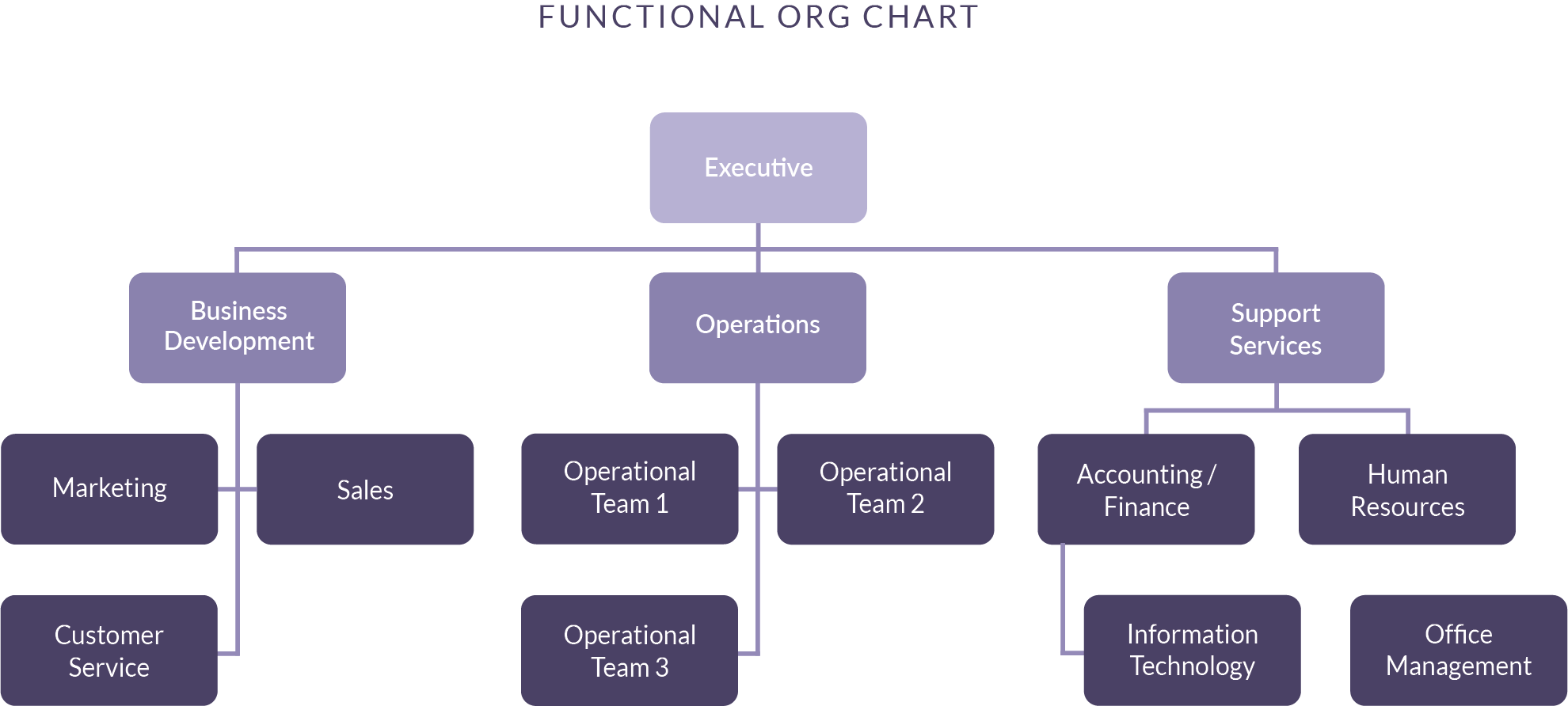Introducing the Functional Org Chart
An Organization Chart, or Org Chart, is a basic tool used by many businesses to communicate where individuals fit within an organization. In Organizational ReWilding, the variation of this concept is called a Functional Org Chart. The key difference is that the Functional Org Chart focuses on positions, not people; no names appear on the chart.
This tool helps instill one of the core principles of Organizational Structure: first organize the work, then organize the people doing the work. Many times, an organization builds its structure around the people who are currently in the company. This results in a fragile company that is weakened each time a person leaves.
By first organizing the work through a Functional Org Chart, enduring structures are created within the organization, improving a company’s resilience to change.
This is an example of a prototypical Functional Org Chart for small or midsized businesses. It can be used as a starting place for an organization and then expanded upon to meet the needs of the specific company.
At the top is the Executive Team, which includes the owner or CEO and support staff (if applicable).
Just below the Executive Team are the three primary areas of the organization—Business Development, Operations, and Support Services. These are the core functions of a business.
Business Development is comprised of three functions: Marketing, Sales, and Customer Service. Marketing generates leads, Sales turns leads into revenue, and Customer Service keeps the revenue coming. (See the Business Development Structure guidebook for more details).
The next area is Operations. This area is divided up into departments based on the types of services and products an organization provides its customers. Each team within Operations focuses on a particular group of services or products. (See the Business Model guidebook to learn more about Revenue Groups and how this principle impacts the structure of Operations). A company might have one to three different departments/teams in Operations.
The last primary business area is Support Services. This includes all departments that support the core business, including Accounting, Human Resources, and Information Technology.
This Functional Org Chart is a starting place for building out the entire organization’s structure. Below is an expanded version of the prototype. The primary structure in the top three layers remains intact; however, this more detailed version includes positions within departments and teams.
You can see from this example how the starting structure is flexible and expandable.
Remember that even at this detailed level, a company’s Functional Org Chart does not show names of employees. The focus is still on organizing the work. This means the focus is not on the current people in the company, but instead is on the functional positions needed to complete the work.
Building an org chart in this way will often lead to identifying more Positions on the chart than there are people in the company. That’s because a single person often fills multiple positions in a small or midsize company.
The concepts from this article were taken from Organizational Structure: Organizing the work independent of the people. Available through The ReWild Group and Amazon, the book explores in-depth this and other concepts while providing illustrations to help business leaders incorporate the ideas into their organizations. Get your copy today, and don’t forget to download the free workbook that serves as a companion guide to the book.


